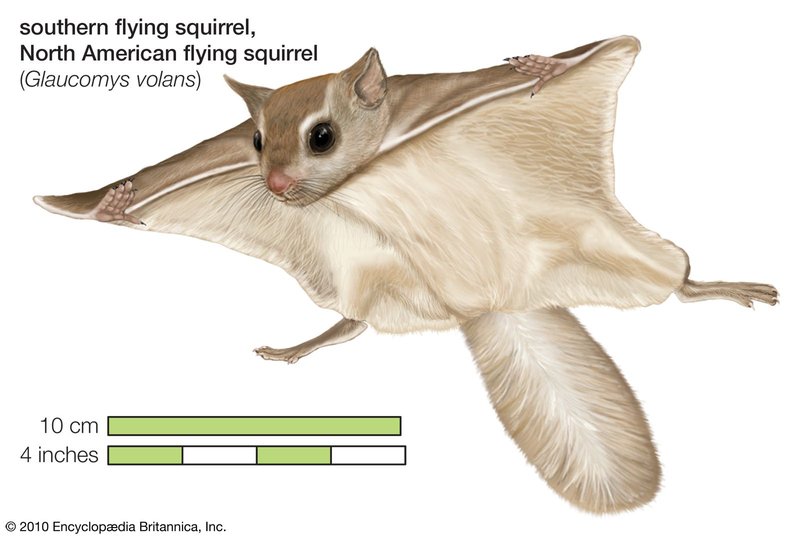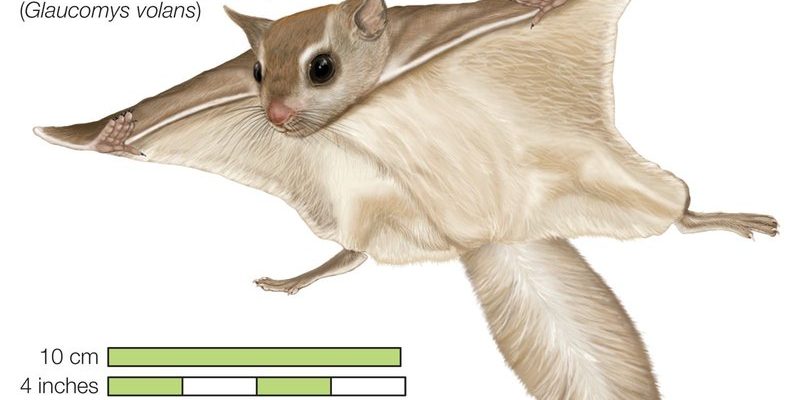
Flying squirrels are not exactly the squirrels you might encounter on your morning walk. They belong to the family Sciuridae, but they have a few tricks up their sleeves (or should I say, their skin?). They glide rather than fly, which is like comparing a bike to a motorcycle. In this article, we’re going to explore the reality behind these adorable gliders, including their habits, diets, and more.
Myth 1: Flying Squirrels Can Fly
You might be surprised to learn that flying squirrels can’t really fly—they glide. Think of them like little paragliders. Their bodies are equipped with a special membrane called the **patagium**, which stretches from their wrists to their ankles. This skin flap is what allows them to soar gracefully between trees, but it’s not quite the same as flying like a bird.
When a flying squirrel leaps from a height, it stretches its limbs out and spreads the patagium to catch the air. They can glide for over 150 feet! That’s like jumping off a small building and floating over to a tree. Just imagine how graceful that would look!
So, while they might not soar through the skies like eagles, they sure know how to make the most of their gliding abilities. Here’s the thing: they rely on this gliding for protection against predators and to navigate their forest homes.
Myth 2: They Are Nocturnal Pests
Many people think that flying squirrels are little pests, scurrying around at night and causing trouble. While they are indeed nocturnal, that doesn’t mean they’re out to wreak havoc. In fact, these little guys are quite shy and prefer to stay out of sight.
Flying squirrels are mainly active during the night, which is when they forage for food. Their diet includes nuts, fruits, and even tree bark. This means they play an essential role in their ecosystem by helping with seed dispersal. Imagine them as tiny gardeners, working under the cover of darkness to keep their environment healthy.
It’s also worth mentioning that flying squirrels don’t usually invade homes. If they do, it’s often because they’re in search of a cozy place to nest. They’d rather stay in trees or cavities in the wild. So, if you see one in your yard, consider yourself lucky! You’ve got a little natural helper on your hands.
Myth 3: Flying Squirrels Are Related to Flying Foxes
It’s easy to mix up flying squirrels with flying foxes, but they’re not even in the same category. Flying foxes are bats, while flying squirrels are… well, squirrels! They might share the “flying” name, but that’s where the similarities end.
Flying squirrels are mammals with fur, and they belong to the rodent family. Flying foxes, on the other hand, are large fruit bats that have a different set of behaviors and ecology. If flying squirrels are the cute, cuddly squirrels of the night, then flying foxes are more like the exotic fruit lovers of the skies.
So, when someone mentions flying foxes, you might want to gently correct them and explain that flying squirrels are their own unique species, full of charm and grace.
Myth 4: They Are Endangered
You might have come across claims that flying squirrels are endangered, but that’s not entirely true. The **Northern Flying Squirrel** is considered vulnerable, mainly due to habitat loss and fragmentation. However, many other species of flying squirrels are thriving in various environments.
In fact, flying squirrels adapt quite well to urban areas. They can often be spotted in parks or wooded neighborhoods, where they can glide from tree to tree. While it’s important to protect their habitats, many populations remain stable, so they’re not in as much danger as some might think.
If you’re concerned about conservation, focus on protecting local forests and minimizing habitat destruction. That way, these magnificent gliders can continue to thrive alongside us.
Myth 5: They Make Good Pets
It’s tempting to think that flying squirrels would make adorable pets, but here’s the thing: they’re not ideal candidates for domestication. While they are cute and cuddly-looking, they require specific environments to thrive. These little creatures are active and need plenty of space to glide and climb.
Additionally, flying squirrels are social animals. In the wild, they live in colonies, so it’s not great for them to be alone. Keeping one in a cage can lead to stress and health issues. Plus, they have special dietary needs that go beyond your usual pet food.
So, while you might dream of cuddling a flying squirrel, it’s best to admire them from afar in their natural habitat. There’s something magical about watching them glide through the night sky.
Myth 6: All Flying Squirrels Are the Same
You might think that all flying squirrels are identical, but that’s far from the truth! There are over **50 species of flying squirrels** scattered across North America, Asia, and beyond. They vary in size, color, and habitat preferences.
For instance, the Northern Flying Squirrel is smaller than the Southern Flying Squirrel, which has a different fur color and habitat requirements. Understanding the differences is essential for conservation efforts and ensuring that each species thrives in its own unique environment.
When you learn to spot the differences, it becomes even more exciting to observe these adorable gliders in the wild. It’s like discovering an entirely new world of diversity among creatures we thought were the same!
Myth 7: They Don’t Interact with Humans
Many people believe that flying squirrels avoid humans entirely, but that’s not quite accurate. While they are naturally wary of us, they can become quite curious. Some urban areas have populations that have adapted to living near humans, especially if there are plenty of trees around.
You might even catch a glimpse of them if you sit quietly during dusk or dawn. They may come out to forage for food, and some people report having friendly encounters. When humans respect their space, these animals can coexist peacefully, providing us with a unique glimpse into their nighttime activities.
If you want to encourage their presence, consider planting native trees and shrubs in your backyard. This can create a welcoming habitat for flying squirrels and a lovely natural experience for you!
In closing, flying squirrels are beloved little creatures with a wealth of myths surrounding them. By debunking these common misconceptions, we can appreciate them for the unique critters they truly are. Next time you think about flying squirrels, remember their charm lies not only in their gliding abilities but also in their complexity and adaptability. So keep an eye out for these nighttime acrobats; you never know when one might glide by!

